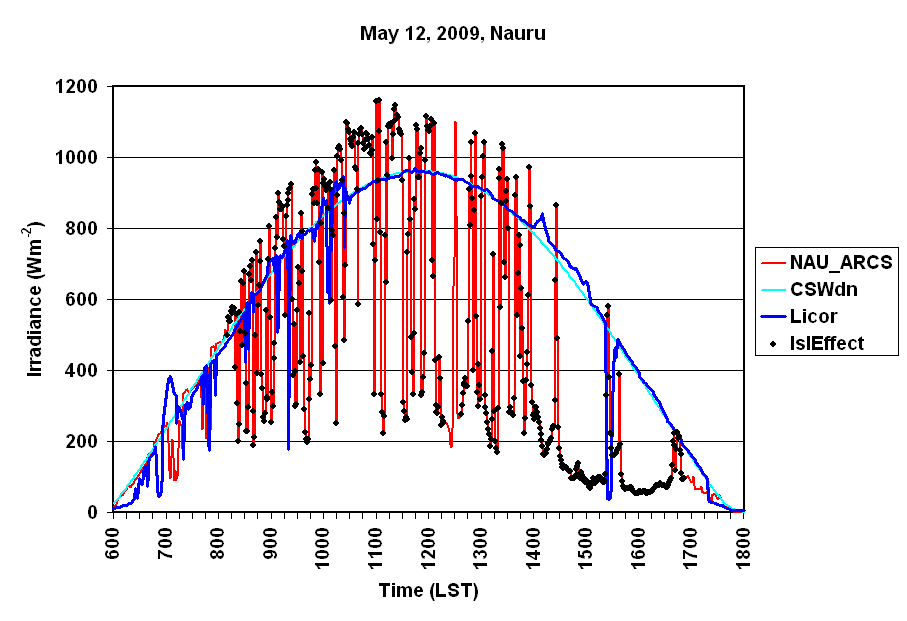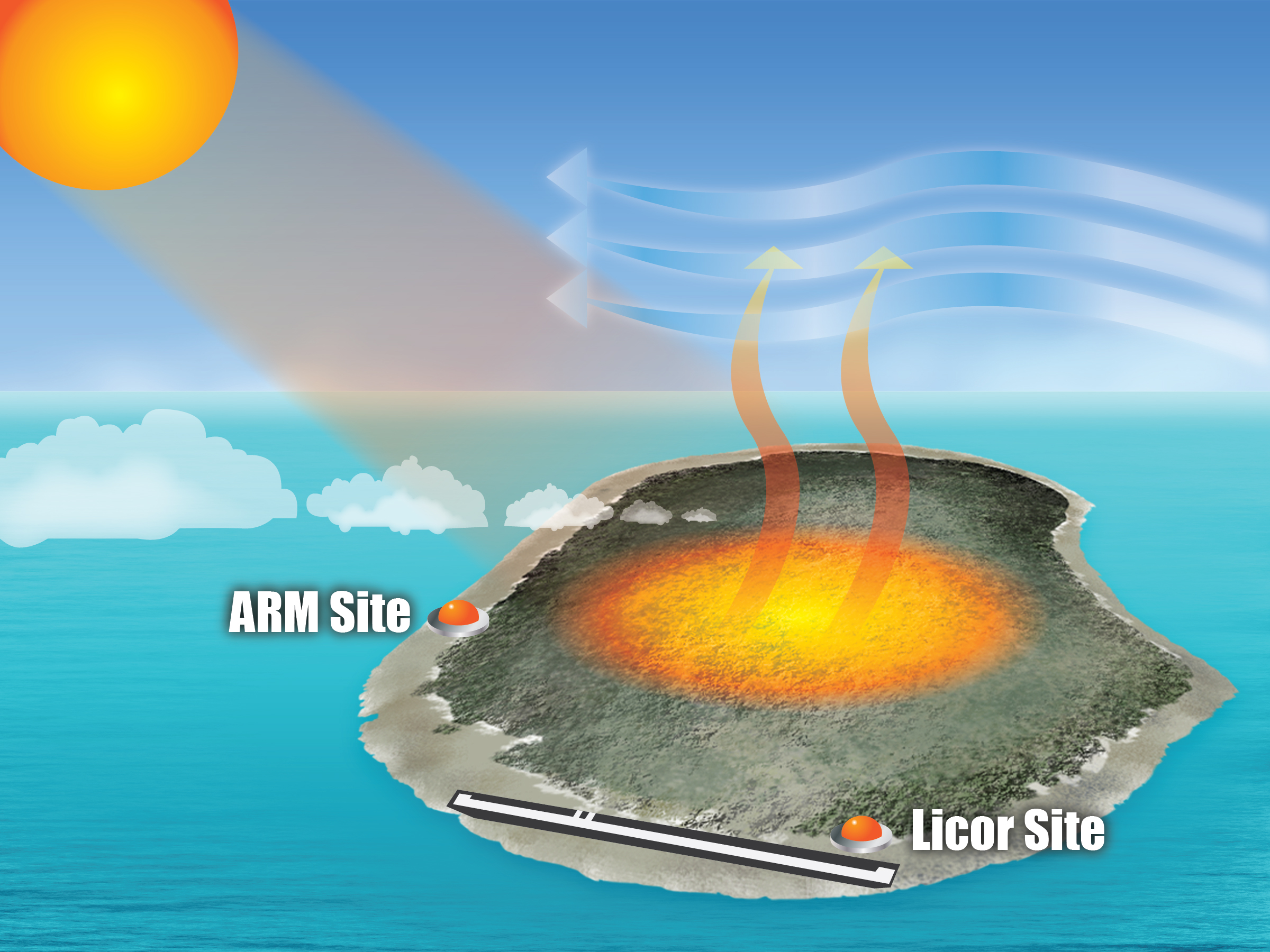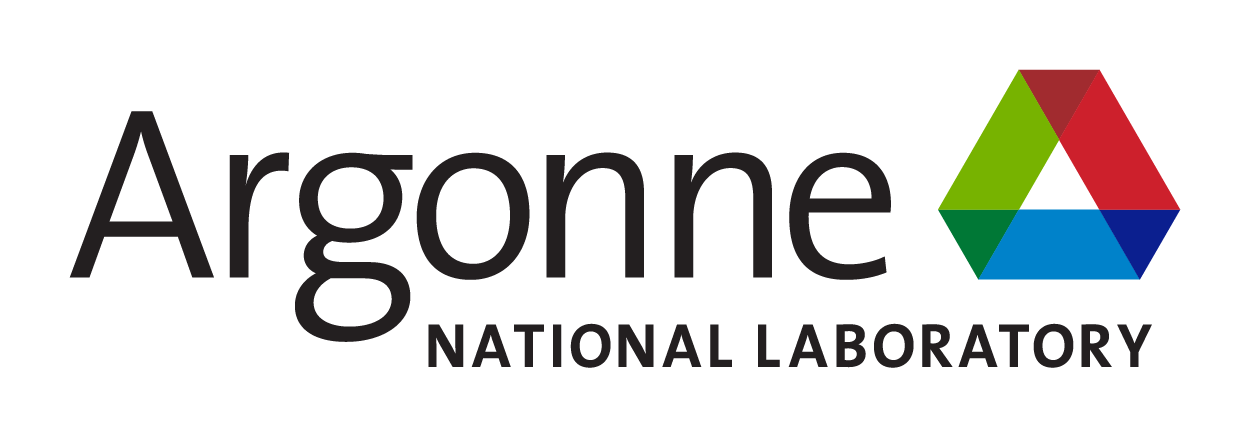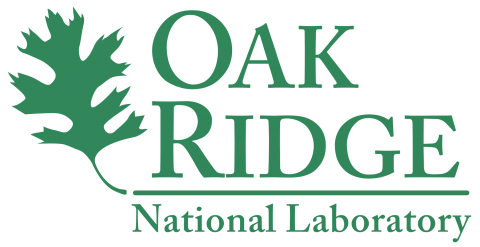Case Closed on Nauru Island Effect
Submitter
Long, Chuck N.
— NOAA- Earth System Research Laboratory
Area of Research
Cloud Distributions/Characterizations
Journal Reference
Long CN and SA McFarlane 2012. "Quantification of the impact of Nauru Island on ARM measurements." 51(3), 10.1175/jamc-d-11-0174.1.
McFarlane SA, CN Long, and DM Flynn. 2005. "Impact of Island-Induced Clouds on Surface Measurements: Analysis of the ARM Nauru Island Effect Study Data." 44(7), 1045-1065.
Science


Impact
The Nauru Island Effect Study (NIES) was conducted from September 2002 to June 2003 to study the island influence on ARM measurements, with an added aim of developing a methodology to detect any \"island effect\" occurrence. McFarlane et al. (2005) reported on the analysis of the nine months of NIES data. They found that the effects of the island-induced clouds were confined primarily to the low-level cloud occurrence statistics and the downwelling shortwave (SW) radiation received at the surface. Additionally, methodology was developed using surface-based downwelling shortwave (SW) radiation measurements from two sites and standard meteorological measurements of wind direction and air temperature to detect the island effect occurrence. As a result, a simple Licor SW pyranometer system was deployed in September 2005 near the airport on the southern end of the island (Figure 1) to use in island effect detection. The current study uses the five years of data gathered from September 2005 through September 2010 and applies the McFarlane et al. (2005) island effect detection methodology to help quantify the influence that Nauru Island has had on the ARM measurements during this time.Summary
The results of the recent study indicate that the solar-heating-produced Nauru island effect occurs about 11% of the time during daylight hours. The island effect increases the 500–1000 meter cloud base occurrence by 15–20% when clouds occur. But since the island effect only occurs 11% of the time, the overall increase in daylight low cloud statistics is 2%, or 1% for 24-hour statistics. Similarly, the island effect produces a reduction of about 17% in the downwelling SW across the daylight hours during the 11% of the time it occurs, an overall 2% daylight (or 1%, 24-hour) average reduction. The island effect produces frequent positive downwelling SW cloud effects, particularly during the morning, which tend to somewhat mitigate the overall decrease in downwelling SW due to clouds. This produces a 17 Wm-2 magnitude less daylight average SW cloud effect than non-island-effect times, particularly for the convectively suppressed regime that typifies island-effect-producing conditions. For long-term overall statistics studies such as model and satellite comparisons, the 2% daylight (or 1%, 24-hour) average increase in low-level cloud occurrence and decrease in downwelling SW are not of large concern as long as researchers are aware. However, for short-term studies, or those that separate data by conditions such as convectively active/suppressed regimes, the Nauru Island effect can have significant impacts.
As an aid for ARM Nauru data users, the TWP Site Scientist Office has produced a \"Nauru Island Effect Detection\" PI Product that includes all surface radiation and meteorological measurements, the retrievals using the full Radiative Flux Analysis PI Product (http://www.arm.gov/data/pi/31), plus a flag at each 1-minute time step indicating whether the Nauru Island Effect is occurring or not, using the McFarlane et al. (2005) detection methodology. The Nauru Island Effect Detection PI product data are available from the ARM Archive at: http://www.arm.gov/data/pi/45.
Keep up with the Atmospheric Observer
Updates on ARM news, events, and opportunities delivered to your inbox
ARM User Profile
ARM welcomes users from all institutions and nations. A free ARM user account is needed to access ARM data.


















